Homemade Mango Yoghurt
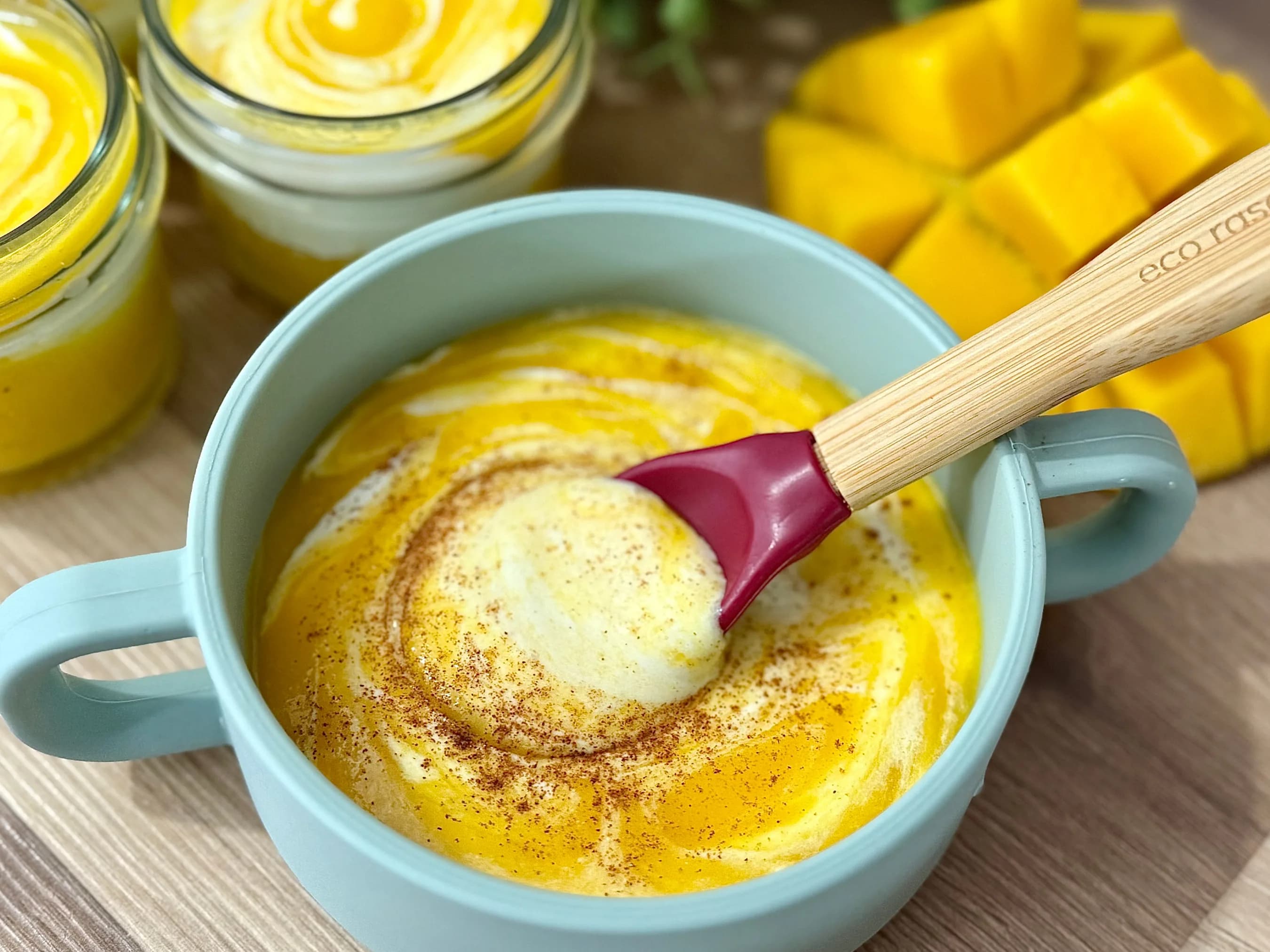
Written by Kenny Ekerin
Fact Checked by Mindsmaking Professionals
24th, November, 2025
This post may contain affiliate links. Please read our disclosure policy.
Are you looking for a healthy treat for the whole family? This easy Mango Yogurt recipe combines creamy yogurt and sweet mango puree. Nutritious, probiotic-rich, and naturally sweet, it's perfect for babies, toddlers, and adults.
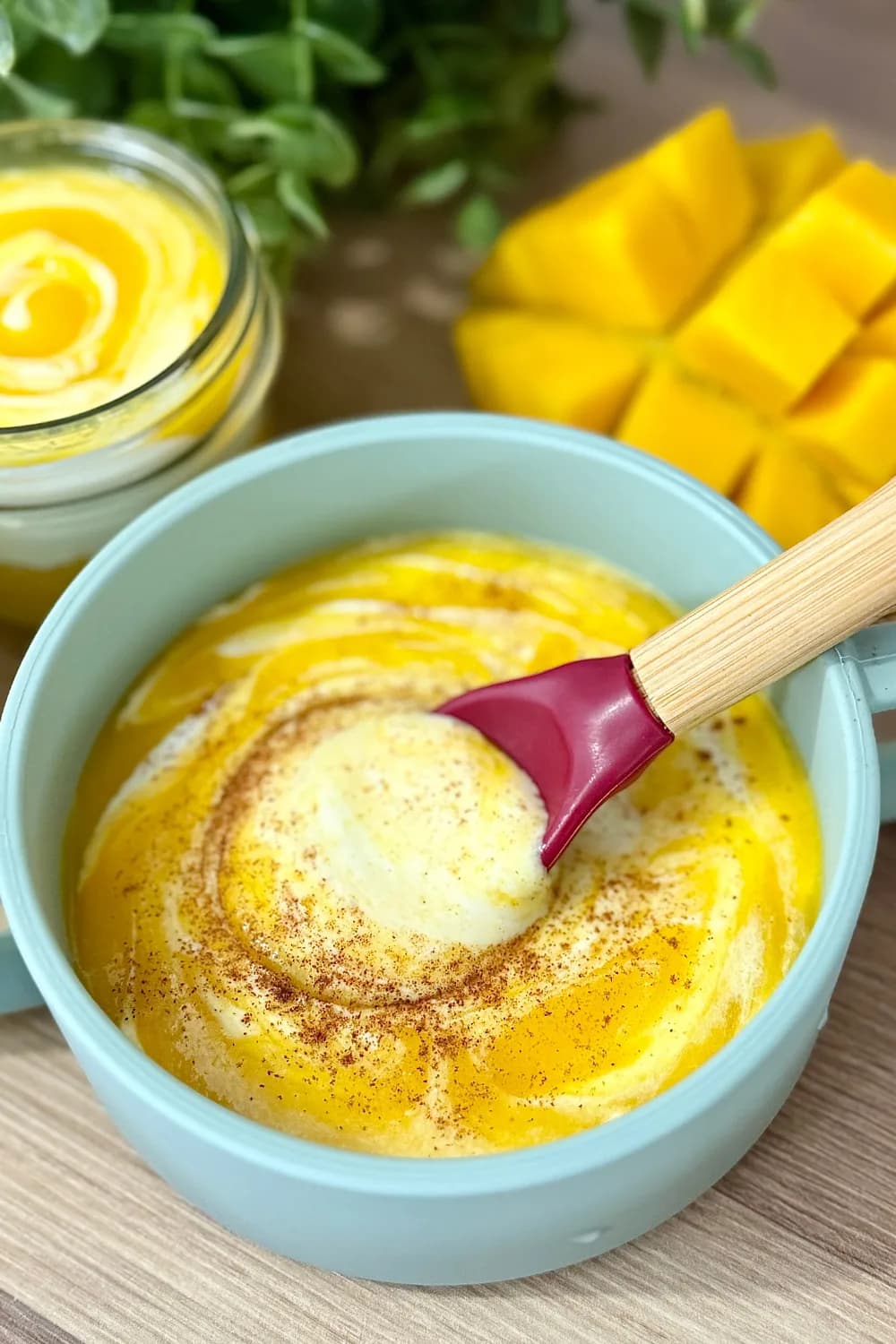
Reasons to Love This Homemade Mango Yogurt
First, it’s incredibly nutritious. The combination of ripe mango and plain yogurt provides a healthy dose of vitamins, minerals, and probiotics. Mangoes are rich in vitamin C, fiber, and antioxidants, while yogurt offers calcium, protein, and gut-friendly probiotics. It’s a great way to support both immune health and digestion.
Second, it’s easy to prepare. With just a few ingredients—mango and yogurt—you can quickly make a wholesome treat for the whole family. The process is simple and doesn’t require cooking, making it an ideal snack or meal for busy days.
Another reason is its versatility. Whether you're serving it as a simple snack for babies, a fun dip for toddlers, or a layered parfait for adults, this mango yogurt can be adapted to suit anyone’s taste. You can add extra toppings like granola, fresh berries, or seeds to customize it, making it suitable for different ages and preferences.
Moreover, it’s a naturally sweet treat. The mango provides enough natural sweetness, so there’s no need for added sugars. This makes it a healthier option, especially for young children and babies who are still developing their taste preferences.
Finally, it’s refreshing and delicious. The creamy yogurt combined with the tropical flavor of mango creates a smooth, refreshing treat that’s perfect for any time of day, whether as a breakfast, snack, or dessert. Plus, it’s a great option for warmer weather as a cool, light option.
Mango Yogurt Recipe
Ingredients:
- 1 cup of Mango Puree (Alternatively, 2 cups of fresh or frozen mangoes)
- 1 ½ cups of plain, unsweetened yogurt (preferably full-fat yogurt for babies and toddlers)
Mindsmaking
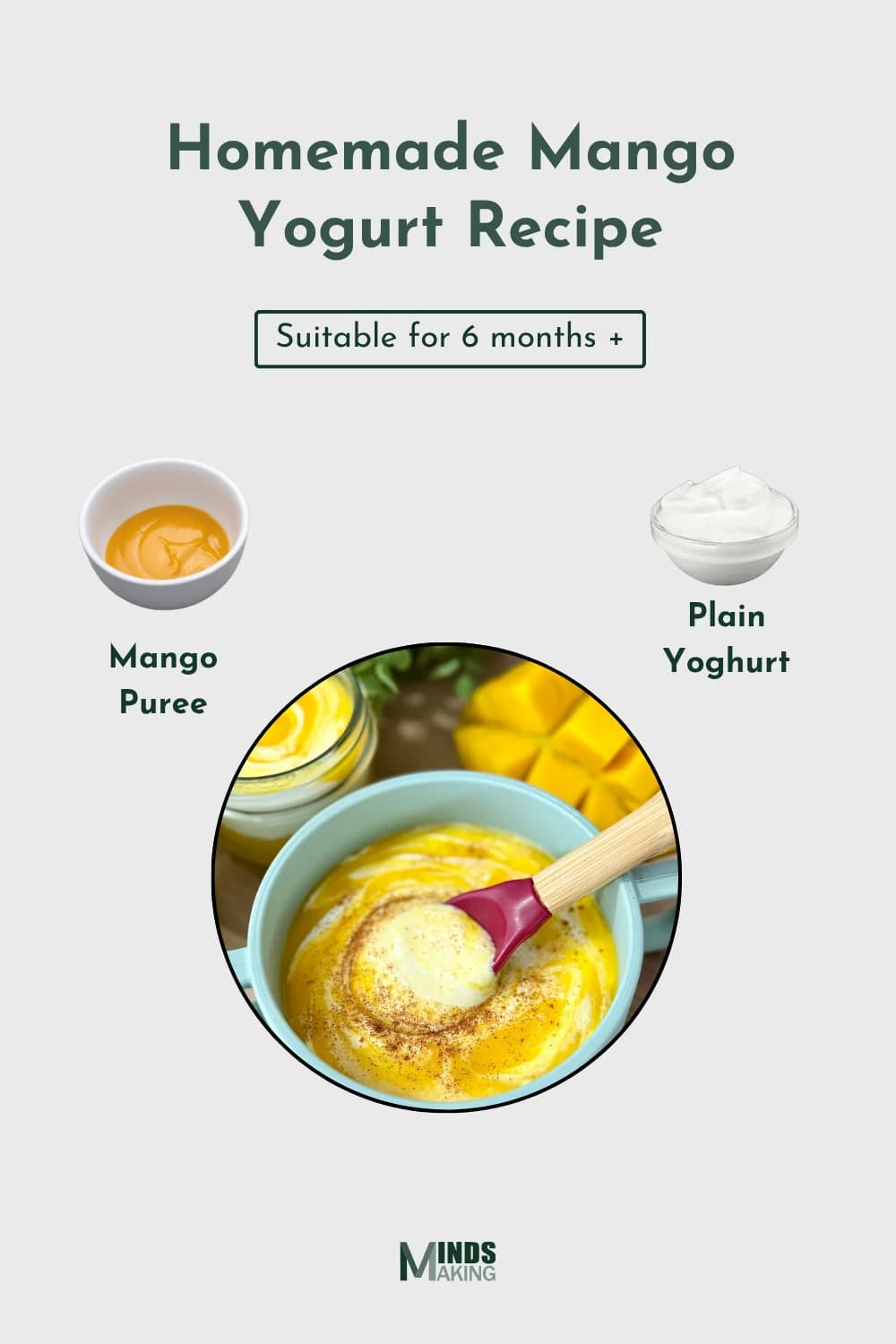
Instructions:
1. Prepare the Mango Puree: If you're using fresh mangoes, peel and remove the pit, then cut the mango into chunks. You'll need about 2 cups of mango chunks. If you're using frozen mangoes, thaw them first before blending. Add the mango chunks (fresh or thawed) into a blender or food processor and blend until smooth. You may need to add a small splash of water if the puree is too thick. The goal is to have a smooth, creamy puree. Once blended, measure out 1 cup of mango puree.
Mindsmaking
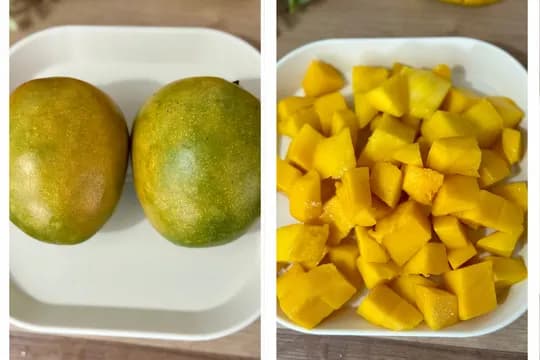
2. Prepare the Yoghurt: In a separate bowl, measure out 1 ½ cups of plain, unsweetened yoghurt. This yogurt should be natural and without added sugar.
3. Assemble the Mango Yoghurt: Take small containers or bowls (enough for individual servings). Divide the mango puree evenly among the containers, placing it at the bottom of each one (approximately 1-2 tablespoons per container, depending on size). Add the yoghurt on top of the mango puree, gently spooning it in. You want to have a layer of yoghurt sitting above the mango.
Mindsmaking

4. Stir Gently: Using a spoon, gently stir the yoghurt and mango together, just enough to create a swirl effect. Don’t mix too much; you want to maintain the two layers, with the mango at the bottom and yogurt on top.
Mindsmaking
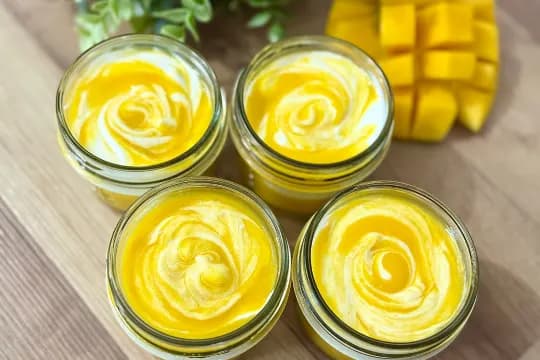
5. Serve: You can serve the Mango Yoghurt immediately or chill it in the fridge for a couple of hours for a refreshing treat. It can be stored in the fridge for up to 3 days.
Read This Next

Recipe Ebook
Essential Guide to Starting Solids for Babies 6 Months+ - LBH Top 70 Baby Puree & Porridge Recipes eBook.
Start your baby’s solids journey with confidence using this "70 Baby Purees & Porridges" eBook! Created with care, this digital guide is packed with nutrient-rich recipes for babies 6 months and older, including purees and porridges tailored to each stage of your baby’s development.
Mindsmaking

Tips for success
Use Ripe Mangoes: The key to a great mango puree is using ripe mangoes. A ripe mango will give the puree a naturally sweet flavor and smooth texture, making your yoghurt more enjoyable without needing added sugar. Look for mangoes that yield slightly to pressure and have a deep yellow/orange color.
Blend Mango Puree Smoothly: When blending your mango, aim for a completely smooth consistency. If the puree is too thick, you can add a small amount of water or even breast milk/formula for babies to thin it out. However, use as little liquid as possible to keep the puree creamy and rich.
Use Full-Fat Yoghurt: For babies and toddlers, it’s best to use full-fat, plain, unsweetened yogurt. Full-fat yogurt is more nutritious and gives the yoghurt a creamier texture. Avoid yogurts with added sugar or flavorings, as they can be too sweet for little ones and may not mix well with the mango.
Chill Before Serving: If you have time, let the assembled mango yohurt chill in the fridge for about an hour before serving. The cold temperature helps enhance the flavors and makes it more refreshing, which is especially nice on warmer days. The chill also helps maintain a firmer texture.
Gentle Stirring: When you add the yogurt to the mango puree, make sure to stir gently. The goal is to create a soft swirl effect, keeping the mango at the bottom and the yoghurt on top. Over-stirring will blend the two together too much, making it more like a plain mango yogurt mix rather than a layered treat.
Portion Control: When preparing the mango yogurt, divide it into individual portions. This not only makes it easier for toddlers and babies to eat, but it also helps with portion control, ensuring everyone gets just the right amount without waste.
Avoid Adding Sugar (for Babies): For babies, skip the added sugar or sweeteners. The mango’s natural sweetness is usually enough to make the yogurt delicious. If you’re preparing it for toddlers, you can consider adding a bit of honey (only if your child is over 1 year old) or a small pinch of cinnamon for extra flavor.
Serving suggestions
For babies, you can serve the mango yogurt in small bowls or containers, ensuring the texture is smooth enough for little ones to enjoy. You can even serve it on a silicone mat for easier cleanup if they’re eating independently. If your baby is just starting on solids, you can mix the mango yogurt with other vegetable or fruit purees, like sweet potato puree or apple puree, to create a new flavor combination.
For toddlers, serve the mango yogurt in a small cup or bowl with a fun spoon or straw to make it more engaging. You can also give them a small dish of mango yogurt with fruit pieces, like berries or banana slices, for added texture. Another great idea is to spread mango yogurt on top of small pieces of pancakes (Applesauce Pancakes) or waffles (Cheesy Sweet Potato Waffles) as a healthy topping. It’s a fun way to serve yogurt and fruit while making breakfast or a snack more exciting.
You can also serve the yogurt as a dip with fruit slices, such as apple, pear, or banana, whole grain crackers, or small pieces of toast. This gives toddlers a hands-on way to enjoy their yogurt while also getting extra nutrition from the fruits or grains. For an added treat, layer mango yogurt with granola and fresh fruits like strawberries or blueberries to create a simple parfait. This is a great option for toddlers who are starting to explore textures and enjoy more complex flavors.
For older kids and adults, you can layer mango yogurt with granola, nuts, seeds, and fresh fruits for a delicious and nutritious parfait. This makes for a great breakfast, mid-day snack, or even a light dessert. Another idea is to use the mango yogurt as the base for a smoothie bowl. Top it with granola, coconut flakes, chia seeds, and a drizzle of honey for a nutritious and filling meal or snack.
For a fun treat during warm weather, pour the mango yogurt into popsicle molds and freeze it to create healthy, homemade popsicles (Homemade Mango Peach Popsicles). You can even add small chunks of fruit for extra flavor. If you’re serving the mango yogurt at a party or a special occasion, consider using small decorative cups or bowls and topping each serving with fun toppings like colorful sprinkles, mini fruit pieces, or shredded coconut.
Lastly, for family-style servings, you can offer the mango yogurt in a large bowl with fruit and granola on the side, allowing everyone to customize their own servings according to their preferences. This way, everyone can enjoy the mango yogurt in a way that suits them best.
How to Store
Use Airtight Containers: Store the yogurt in airtight containers to maintain its flavor and prevent any contamination from other odors in the fridge. Glass jars or plastic containers with tight-fitting lids work well for this purpose.
Portioning for Convenience: If you want to make serving easier, consider dividing the yogurt into individual portions before storing. This is especially helpful for toddlers and kids who may need quick access to their snack, or for busy days when you need to grab a pre-packed serving.
Refrigeration: Store the mango yogurt in the fridge, where it will keep for 3 days. Make sure your refrigerator is set to the proper temperature (around 37-40°F or 3-4°C) to maintain food safety.
Avoid Freezing: While you can freeze the mango puree separately for up to 3 months, it’s not ideal to freeze the yogurt once it’s mixed with the fruit. Freezing yogurt can alter its texture, making it grainy when thawed. Therefore, it’s best to store the mango yogurt in the fridge and consume it within a few days.
Check for Freshness: Before serving stored yogurt, always check for any changes in color, texture, or smell. If it smells off or has an unusual texture, it’s best to discard it.
Frequently Asked Questions
Is mango yogurt safe for babies?
Yes! Mango yogurt made with plain, unsweetened, full-fat yogurt and ripe mango puree is safe for babies starting solids around 6 months of age, once they’ve been introduced to individual ingredients.
Can I use store-bought mango puree?
You can, but it’s best to check the label to ensure there are no added sugars or preservatives. Homemade mango puree is always the healthiest and freshest option.
What type of yogurt should I use for babies?
Use plain, full-fat yogurt with no added sugars or flavors. Greek or regular yogurt works, but make sure it’s unsweetened and suitable for infants.
Is it okay to add sweeteners?
For babies under 1 year old, avoid added sugar or honey. Ripe mangoes are naturally sweet and should be enough. For toddlers and older kids, a tiny bit of honey or cinnamon is okay if desired.
Can I make this recipe with frozen mangoes?
Yes! Just thaw the frozen mango before blending. Frozen mangoes work just as well as fresh, especially when ripe ones are out of season.
Can I mix the mango and yogurt fully instead of layering?
Absolutely. If you or your child prefers a blended yogurt, feel free to stir thoroughly to create a smooth mango-flavored yogurt.
How long does mango yogurt last in the fridge?
Store it in an airtight container in the refrigerator for up to 3 days. Always check the smell and texture before serving.
Can I freeze mango yogurt?
Freezing is not recommended once the yogurt and mango are mixed, as it may separate and become grainy when thawed. However, you can freeze mango puree alone for up to 3 months.
What age is appropriate to start serving this?
Babies can start enjoying this mango yogurt around 6 months, depending on readiness for solids and tolerance to dairy. Consult your pediatrician if unsure.
How do I serve this to toddlers or older kids?
You can serve it: As a dip with fruits or crackers Spread on waffles or pancakes Layered into a parfait with granola and berries Frozen into popsicles for a healthy summer treat
Can I add other flavors or mix-ins?
Yes! You can stir in: Other fruit purees (banana, strawberry, peach) A pinch of cinnamon or nutmeg Finely chopped fruits for texture Chia seeds or flaxseed for extra fiber (for toddlers and up)
What if my yogurt is too tart?
If plain yogurt is too tangy, use a milder whole milk yogurt, or add more ripe mango to naturally sweeten the mix without adding sugar.
Was this article helpful?
How many stars are you giving this article?
Leave a comment
Your email address will not be published.
Comments
More From Recipe

Avo, Carrot & Prune Puree

Carrot Potato Tots

Banana Ice Cream (2 ingredients)
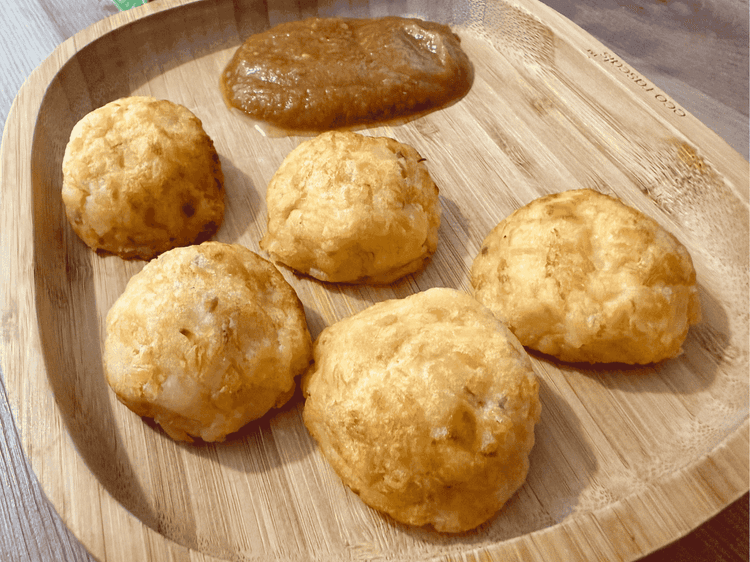
Salmon Fish Cakes
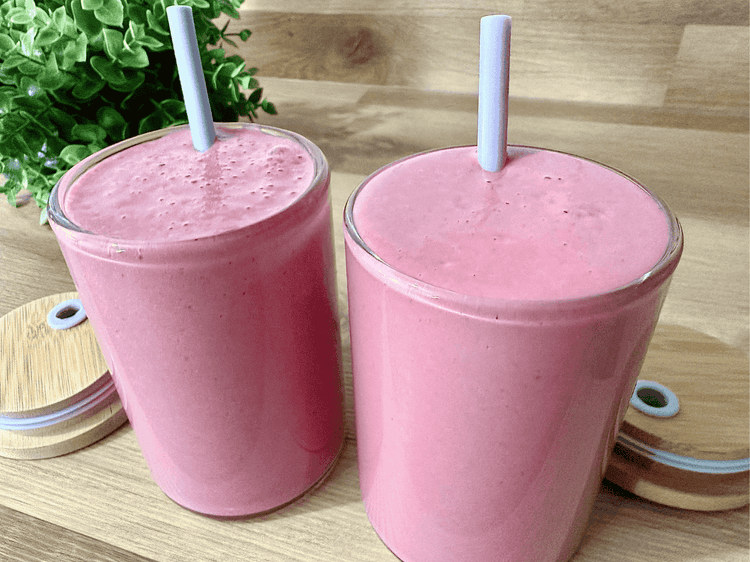
Beet, Strawberry, and Banana Smoothie

Apple, Peas & Potato purée
Get new recipes to your inbox
Subscribe to our weekly newsletter and get new recipes sent to your inbox!